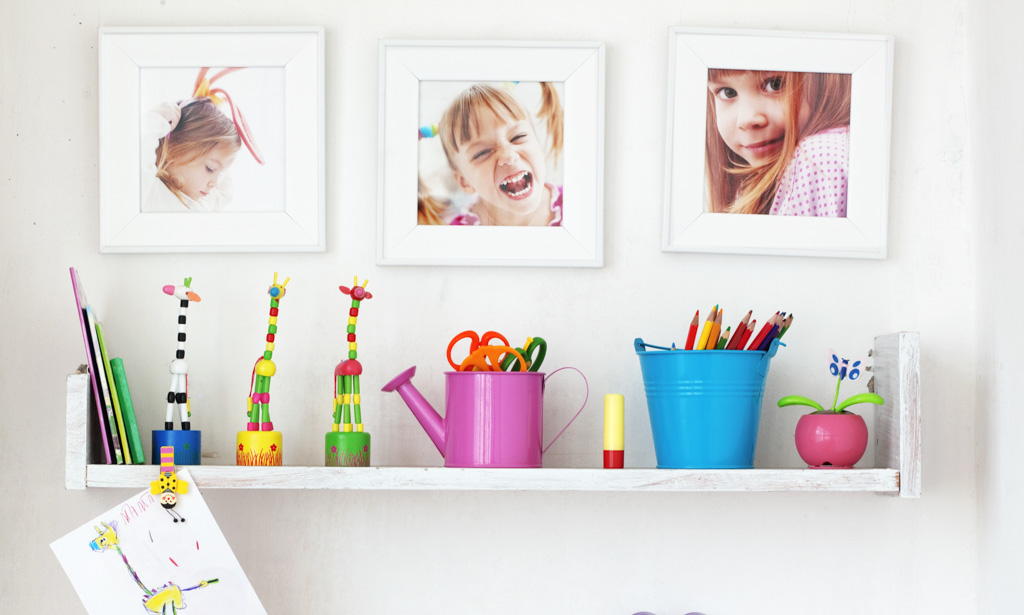As any parent knows, there’s a lot to juggle when it comes to our kids’ lives. Throw homeschooling into the mix and there’s even more to balance between school and life: proper paperwork for the state, researching curriculum, planning lessons (sometimes for more than one student and grade level!), organizing field trips, gathering materials, teaching and grading, doctor’s appointments, vacations, extracurriculars, and more! That’s why — as great as the flexibility of homeschool is — it’s essential to have some sort of organizational system in place.
Why is it important to be organized? Well, it can help better facilitate learning, lessen distractions, create more peace and calmness, and separate “school” life from “home” life.
Here are 4 tips to help organize your homeschool.
1) Start with “structured flexibility.”
One of the joys of homeschool is the flexibility it provides in terms of schedule. And while your schooling can fit around your schedule, it’s also important to remember to schedule it! At the start of each year (or quarter, or semester), sit down and plan out your lessons. See when you have vacations and holidays already scheduled. Figure out how much material you have to cover and how many days you have to complete it. Then, set a rough daily schedule that includes what will be taught each day. We say “rough” because, again, homeschool is flexible and you might find that you need more time than you had allotted for a certain topic, so you need to adjust lessons a bit. But having that tentative schedule will help make sure you stay on track! In case the opposite happens and you finish materials faster than anticipated, have a plan for what you’ll do with that extra time. Will you move on to next week’s work? Will you do extra activities centered around the lesson? Will it be free time? Set your schedule for how it works for you and your learner — maybe you don’t do math every day but do it 2 days a week in larger chunks, maybe you prefer hourly schedules — and know that things may change, and that’s okay.
2) Determine your plan, objectives, and goals.
Figure out what you want to accomplish this week, month, semester, and year. Get your kids involved, too! At the start of each week, sit down and discuss the plan, see what questions your kids have, and ask what they want to accomplish. Having a plan will help you stay on track, and goals give you and your children something to work toward. Is there anything better than that sense of accomplishment you get when you meet — and exceed — those goals?
3) Have a dedicated school room.
When you homeschool, it can be difficult to transition from “school” time to “home” time. And as tempting as it can be to want to sit on the living room couch and “do school,” it can bring some unwanted and unnecessary distractions. If you’re able to, we suggest having a dedicated “school” room to use when it’s time for lessons each day. Set it up like a classroom. Have a desk for each student and yourself. Hang up a whiteboard in the front of the room and use it to teach from. Create a reading nook in one corner with books, comfy chairs or pillows, and blankets. Hang posters of multiplication tables, the periodic table, anatomy — whatever topics your learner will cover that year.
In your school room, you should keep all the supplies your child will need. Assign each learner a cubby or bin, in which they can keep pens, pencils, paper, tablets (if you use one for school), workbooks, lessons, and assignments. This way, everyone knows where they need to go to find their work. Keep that list of goals in there too, as a reminder of what they’re working toward.
If you can’t have a whole separate room dedicated to school, designate an area of a room as the “school area,” or put a desk in your child’s room for school work. Those bins will really come in handy in this case, ensuring school-related items don’t end up all over your house!
4) Organizational procedures are your friend.
So, your student completed their lesson, and now where does it go? Back in his bin or cubby where you’ll never see it? On your desk for review and grading? Set up procedures so that at the end of a unit lesson or term, you aren’t scrambling to grade assignments that got lost in the shuffle and never made their way to you. You could have a folder for each student, where they put completed assignments, that then goes into a tray on your desk for review. Is the work that they’re doing on a computer? Make sure they know whether or not you should see it before they submit or complete it! Those bins and cubbies we discussed above? Have each student return items to their assigned cubby at the end of each day so things are ready to go the next day. Even little things, like knowing when to let you know if they are running low on supplies from their cubby or bin, can be helpful for making your day run more smoothly. Set calendar reminders for things like assessment testing (if your state requires it), grade-reporting deadlines, and anything that has a set date, for a few weeks before the deadline so you have everything you need when the time comes, and it doesn’t sneak up on you.
Sometimes, homeschooling can seem a little overwhelming, with lots of different moving parts. But with a little organization, your homeschool day and year can be easy. What are your favorite organizational and planning tools, tricks, and tips?







